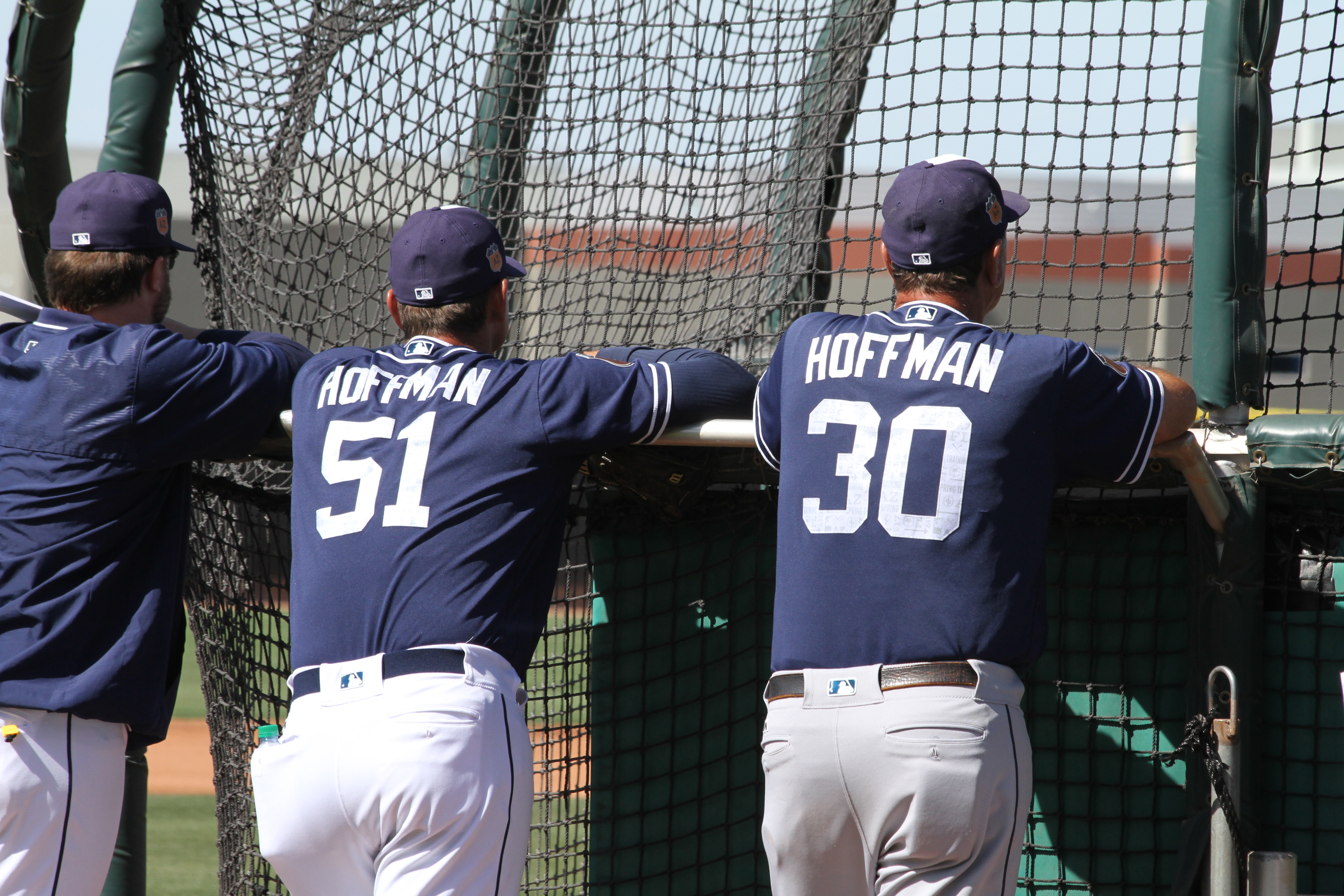Trevor and Glenn, A Tribute to Brotherly Love and The Importance of a Jersey Number

Credit: Mark Clark

What is in an athlete’s personal jersey number?
From the time they were kids, they have gravitated toward certain numbers that mean something to them. For many, it is a number chosen to honor a favorite sports hero. For others, it may be a lucky number or a birth year.
Trevor Hoffman’s choice was one of brotherly love and a testament to the notoriously strong bond that runs throughout the Hoffman family.
In 1993, halfway through the season, the Marlins and Padres made a trade that brought over a player who would eventually be an integral part of Padres legend.
Trevor Hoffman, and right-handed pitcher, Jose Martinez, came to the Padres via trade with the Florida Marlins for Gary Sheffield and Rich Rodriguez. The trade was viewed as just another typical Padres salary dump. This happened on June 24, 1993. The very next day, Hoffman made his pitching debut for the Padres. According to catcher Kevin Higgins, “They didn’t exactly give him a warm welcome, booing loudly.” (“Catching Hoffy: Battery mates share best memories”, http://m.padres.mlb.com/news/article/91892832/catching-trevor-hoffman-batterymates-share-favorite-memories)
Markedly, the performance was not overly impressive. His line read one inning pitched, four hits, three runs–two of them earned, while facing seven batters, and throwing 24 pitches. He did have one strikeout though. In fact, his first year with the Padres was not indicative of what his San Diego career had in store for him. He pitched 39 games in ’93, running with a 4.31 ERA with two wins and four losses. Positively, though, he threw 53 strikeouts in 54 innings, a pretty decent rate for the young pitcher. And he did this all while wearing number 34.

Yes, though some of you may know and remember this, Mr. Hoffman didn’t always wear number 51. In his first year with the Padres, he wore 34. Here is the brief story of Trevor’s jersey number.
Glenn Hoffman, Trevor’s brother, former MLB player, and the Padres’ longtime resident third base coach, always wore the number 15 in his younger days. So, in honor of his brother, Trevor would have liked to don the same number. Unfortunately, in Florida, manager Rene Lachemann already wore it. So, he chose 51 as the inverse representation. When he moved to San Diego, the first season, he wore number 34, as manager Bruce Bochy was already wearing number 15. Then, in 94, he switched his number back to 51, again in honor of his brother, and the legend became history.
Trevor would go on to have a remarkable career and define his place in Padres legend. In August of 2011, Trevor stood on the field with his two older brothers, Glenn and Greg, and his late father, the singing usher from Angel Stadium, on the stadium big screen, and watched his number, which was worn in honor of his brother and as a testament to the strong bond of family, set in immortality alongside the other Padre greats.
Michael Clark is a Las Vegas historian with a Bachelor’s Degree in U.S. and Nevada history from the University of Nevada, Las Vegas. He is a third generation Padres fan who has “paid attention” ever since his family returned to the states from military service in Germany in the early 1980’s. His grandparents move to Chula Vista in the 30’s where they bought a house on K Street. Both parents graduated Chula Vista H.S. in 1959. During his Dad’s tenure in the Air Force, 26 years, multiple times he, with his Mother, brother, and sister, made their home in that house. His Grandfather, Grandmother, Mother, and Father are all buried at Ft. Rosecrans, Pt Loma where they get to see every Padres home game right across the bay. It is the authors goal to bring many of the great tales from the Padres storied past to light for many of the new fans and to remind those who may have lived through it. Most articles will also feature baseball cards of the players mentioned. This gives an added peek into the past and provides some nostalgia. You can follow me on twitter at gwynn19@wcoastcapper